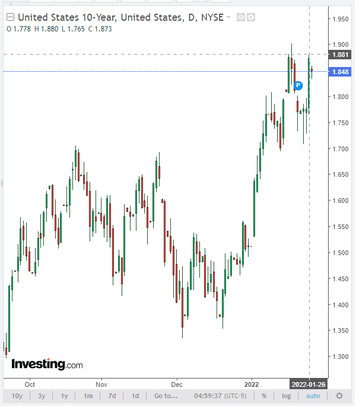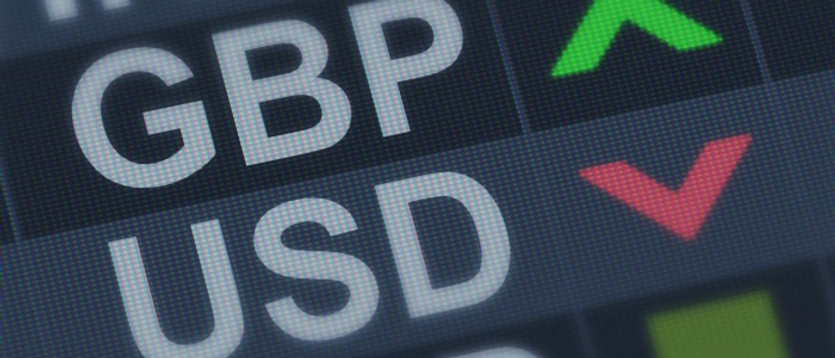The US dollar continued to strengthen during today's Asian trading session after the Fed meeting ended on Wednesday and its signal of a tendency to more aggressive interest rate hikes.
At the time of writing this article, the DXY dollar index was at 96.79, in line with July 2020 levels, while the yield on 10-year US government bonds jumped yesterday to 1.880%, returning to the highs of 2 years ago.

At the end of the two-day meeting, Fed officials left the target range for federal funds rates unchanged, but hinted that they could start raising rates in March. Fed Chairman Jerome Powell also said there is room for rate hikes without hurting the labor market. According to him, "there is significant room for raising rates without jeopardizing the labor market", as "labor market conditions correspond to full employment". At the same time, the situation with inflation in the United States worsened after the December Fed meeting, Powell acknowledged, stating that "Fed policy will need to respond in the event of a further deterioration in the situation".
Now, many economists are strengthening the opinion that Fed leaders can raise the rate in March at once by 0.50%, and the number of rate hikes in 2022 may increase from 3 to 6. According to the CME Group, investors take into account 100% chance of at least a quarter of a percentage point first rise in March and nearly 70% chance of a second rate rise in May.
After the end of the cycle of raising interest rates, the Fed's balance sheet, which currently stands at almost $9 trillion (about 40% of US GDP), is likely to begin to shrink. This will also be a positive factor for the dollar.
Next week there will be meetings of 3 more world's largest central banks: Australia, the Eurozone and the UK. At the meeting, which will end on Thursday at 12:00 (GMT) on the interest rate decision, the Bank of England is expected to raise it by 0.25% to 0.50%, thus outperforming its main competitors in this process, the Fed and the ECB. This is positive news for the British pound. However, it could come under pressure if market expectations that UK interest rates will be raised four times this year are not met. A similar reaction of market participants was to the increase in interest rates by the central bank of New Zealand. At the end of November, RBNZ leaders raised the interest rate to 0.75%. However, this decision did not lead to a significant strengthening of the NZD. Moreover, the New Zealand dollar came under pressure in the following weeks, with RBNZ leaders signaling that they would now take a wait-and-see approach to assessing the impact of the rate hike on the New Zealand economy.
Economists say the Bank of England has a "limited toolbox" to contain inflation driven mainly by external factors, including rising energy prices and supply chain disruptions. The Bank of England kept rates flat from 2010 to 2013 when inflation was high and could do so again, economists say, given government uncertainty and risk aversion amid rising tensions with Russia over events in Ukraine and as well as the ongoing threats from the coronavirus (despite the vaccination campaign, the UK continues to have a high infection rate).





